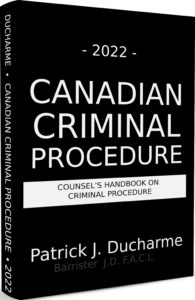 |
| Patrick Ducharme |
In R. v Jarvis1 and R. v. Ling2 the Supreme Court of Canada held that where the predominant purpose of the inquiry is the determination of a penal liability, officials must relinquish their authority to use inspection and requirement powers given to them under regulatory schemes such as the Income Tax Act. The issue becomes whether the predominant purpose of the regulatory investigator at the time the evidence is gathered is to attempt to determine penal liability. If regulatory investigators are pursuing a purpose that is predominantly penal in nature, then the Charter principles under sections 7 and 8 are available to challenge the search or seizure. If, on the other hand, regulators gather information while predominantly pursuing a regulatory objective, there is no general rule precluding passing information so discovered to criminal investigators. The questions to be answered are as follows:
1. Did the regulatory investigator have reasonable and probable grounds of crime?
2. Was his/her conduct consistent with a criminal investigator?
3. When was the information obtained and shared with a penal investigator?
4. Did it look like an agency relationship between the regulatory and criminal investigators?
5. Was the information gathered more relevant to regulatory or criminal liability issues?

The above is the an excerpt of Patrick J Ducharme's book, Canadian Criminal Procedure, available at Amazon or in bulk through MedicaLegal Publishing along with Criminal Trial Strategies.
Subscribe to Patrick Ducharme's Youtube Channel
